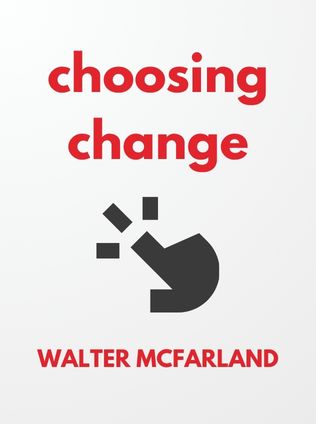
Choosing Change
How Leaders and Organizations Drive Results One Person at a Time
By Walter McFarland,
Published 11/2013
About the Author
Susan Goldsworthy is an international executive coach, award-winning author, and former Olympic finalist with extensive global business experience. She has a deep passion for helping leaders and organizations achieve transformational change and coaches and speaks internationally on executive development, leadership, and change.
Walter McFarland is a consulting executive specializing in the leadership of large-scale organizational change. He served as the 2013 Chairman of the American Society for Training and Development and is a former Senior Vice President at Booz Allen Hamilton. McFarland has a wealth of experience in guiding organizations through complex change initiatives.
Main Idea
The main idea of "Choosing Change" is to provide a comprehensive guide for leaders and organizations to navigate and leverage change effectively. The authors, Susan Goldsworthy and Walter McFarland, present a model that emphasizes the importance of personal commitment to change as a precursor to leading organizational change. By integrating insights from psychology, neuroscience, and executive development, they offer practical strategies to implement and sustain change both individually and organizationally.
Table of Contents
- Introduction: The Choice of Choosing Change
- Part I: The Change-Focused Leader
- Disruption: What Conscious Choice Will You Make?
- Desire: What Do You Really Want to Change?
- Discipline: What Are Your Small Steps to Big Success?
- Determination: How Can You Embrace the Setbacks?
- Development: How Will You Keep Growing and Who Will Help You?
- Part II: The Change-Focused Organization
- Disruption: Balancing Challenge and Opportunity
- Desire: Building Motivation to Change
- Discipline: Coordinating Energy, Focus, and Effort
- Determination: Coping with Setbacks
- Development: Learning Continuously About Change
Introduction: The Choice of Choosing Change
Change is a natural part of life, yet it remains one of the most challenging aspects for individuals and organizations. McFarland and Goldsworthy argue that the key to successful change lies in the approach taken by both individuals and organizations. They propose a proactive model where change is viewed as an integral part of daily practice, initiated by personal commitment before it can be effectively led within an organization.
“If there's one certainty in business today, it's this: Change is coming your way. You have no choice in the matter. The choice you do have is either to embrace it or bury your head in the sand.” – Walter McFarland and Susan Goldsworthy
Part I: The Change-Focused Leader
Disruption: What Conscious Choice Will You Make?
Before any change can begin, there must be a disruption—a moment or event that triggers the need for change. This disruption forces us to ask, "Can I afford to ignore this?" It is a conscious choice that requires significant energy and attention to leverage.
“Brain research shows that for every move you make, you have 0.2 seconds in which you can actively, consciously intervene in the process and choose a different response.” – McFarland and Goldsworthy
Understanding the habitual nature of our responses is crucial. Habits operate in a loop of cue, routine, and reward. Disruption creates an awareness of these cues, allowing for conscious intervention and the potential to establish new, more beneficial routines.
Sign up for FREE and get access to 1,400+ books summaries.
You May Also Like
The Subtle Art of Not Giving a F*ck
A Counterintuitive Approach to Living a Good Life
By Mark MansonRich Dad Poor Dad
What the Rich Teach Their Kids About Money - That the Poor and Middle Class Do Not!
By Robert T. KiyosakiHow To Win Friends and Influence People
The All-Time Classic Manual Of People Skills
By Dale CarnegieQuiet: The Power of Introverts
The Power of Introverts in a World That Can't Stop Talking
By Susan Cain



















